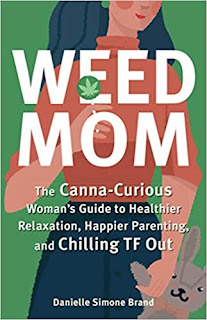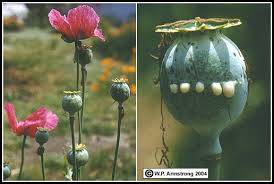Drug Abuse in Pakistan 1 – Pharma Veterans’ Blog Post #586 by Asrar Qureshi
Drug Abuse in Pakistan 1 – Pharma Veterans’ Blog Post #586 by Asrar Qureshi
Dear Colleagues! This is Pharma Veterans’ Blog Post #586. Pharma Veterans welcome sharing of knowledge and wisdom by Veterans for the benefit of Community at large. Pharma Veterans Blog is published by Asrar Qureshi on WordPress, the top blog site. Please email to asrar@asrarqureshi.com for publishing your contributions here.
Addiction of opium was long recognized by the government, and it issued licenses for selling opium. The licensed shops received their supplies from the government and sold it to addicts. Where did the government get it from? We cannot say, but it was legal trade. Police did not bother with opium addicts who might be seen in some park or on roadside, but their majority spent time at Mazars of Saints. We saw these shops when we were young; these had a typical black signboard with Urdu lettering in white which said, ‘Theka Afyoon’. General public was not against addicts, it was rather sympathetic. Many households also kept a small amount of opium which would come in handy if an infant or young child was irritated beyond control. Opium is derived from poppy plant whose flower is beautiful and is referred to in Urdu poetry as ‘Gul e Lala’. The bulb at the base of the flower exudes white liquid which is collected by making small incisions at its sides. This collected liquid is purified to make opium, which is further processed into Heroin, a dreaded abuse substance.
Codeine was derived from opium and was made into pain relieving tablets and cough syrup. Codopyrin tablet from Glaxo was a national brand which was advertised even on radio. Another popular combination was sold by the name APC; it contained Aspirin, Phenacetin and Codeine. Phenacetin was predecessor of and was later replaced by Paracetamol. Several codeine containing cough syrups were available on the market; Corex from Pfizer was most popular. Corex also became popular with addicts who would buy a bottle and drink it at one time to get the desired ‘high’.
Charas (Hashish) was another drug, and it was more popular among students, artists, showbiz people, so-called liberals, and people subscribing to Bohemian lifestyle. The Hippie Movement of late 1960s and 1970s also made Charas hugely popular as an icon of their movement. Hippie Movement reached everywhere, including Pakistan, and added to the romance of charas. Charas is extracted from the famous Cannabis plant, which is now being legalized in the developed countries. Cannabis oil and other products are on sale legally and in 2018, USFDA approved the first cannabis-based medicine, EPIDIOLEX for two rare forms of epilepsy. Cannabis oils etc. are probably available in Pakistan also through certain channels. Charas used to be the in-thing during our college days and late 1970s. Its addiction was not so potent, and people used it and stopped it, if they wanted.
Cannabis was the most popular, and ubiquitous intoxicating substance on our landscape. Cannabis, ‘Bhang’ in local language, grew in the wild without effort. Its leaves were crushed to make Bhang drink which was publicly consumed at every Mazar by the caretakers. It was fantasized as the drink to raise spirituality and more. Cannabis leaves were also used for few other purposes.
Last year, Danielle Simone Brand gained immediate popularity by publishing her book – Weed Mom. The cover said, ‘The Canna-Curious Woman’s Guide to Healthier Relaxation, Happier Parenting, and Chilling TF Out’. The thesis is that parenting is a high stress job and relaxing with Cannabis can help to stay calm and become better parents. The book has gained a rating of 4.5/5. I reserve my comments.
For younger people, it may come as a surprise that until late 1970s and early 1980s, common substances mentioned above were easily available. Alcohol was also available without restriction and was consumed freely on social and professional occasions. All major hotels had bars which served local and imported spirits.
In 1977, Peoples Party was in power, and its founder Zulfiqar Ali Bhutto was the Prime Minister. The country went into election, and lots of irregularities were pretested by the opposition parties. Immediately after the elections, the opposition got together and rallied against rigging and other issues. The religious political parties had a stronger voice in the opposition alliance and soon the protest became battle cry for implementation of Islamic system. The PM used power to quell protests, but it did not work. Negotiations were refused. Then ZAB announced certain steps to show that the country would go toward Islamic system. Ban of alcohol was among those steps. Street sales were stopped, public consumption was prohibited and a license to buy alcohol from designated places was put in place. It did not stop alcohol consumption, but it took it out of public sight.
During early 1980s, codeine was banned from medicines and all codeine-containing products were withdrawn. The Pharma companies sold their last bottle of cough syrup and pack of tablets however, which then kept on selling on the black-market for quite some time at exorbitant prices.
In 1979, Afghanistan was invaded by the Soviet Union. The US and European allies decided to fight back through proxies, and it started a war at various levels which has still not seen the end. Poppy cultivation and its processing to make Heroin and other substances was used as means for earning much needed hard cash. All parties on all sides colluded on it. Pakistan became a conduit for such trade, and some of it trickled on to the local market. It started the worst addiction era in Pakistan. I saw Heroin being sold everywhere by unscrupulous elements. Too many young people were lost to addiction and lost their lives and their families’ lives and means and hopes. Next to come was gun culture, crime culture, suicide bombs culture, and explosions culture, but these are not our subjects at present.
To be Continued……
Disclaimer. Most pictures in these blogs are taken from Google Images which does not show anyone’s copyright claim. However, if any such claim is presented, we shall remove the image with suitable regrets.
The FDA Just Approved Its First-Ever Cannabis-Based Drug | NOVA | PBS
Rising trend of substance abuse in Pakistan: a study of sociodemographic profiles of patients admitted to rehabilitation centres - PubMed (nih.gov)






Comments
Post a Comment